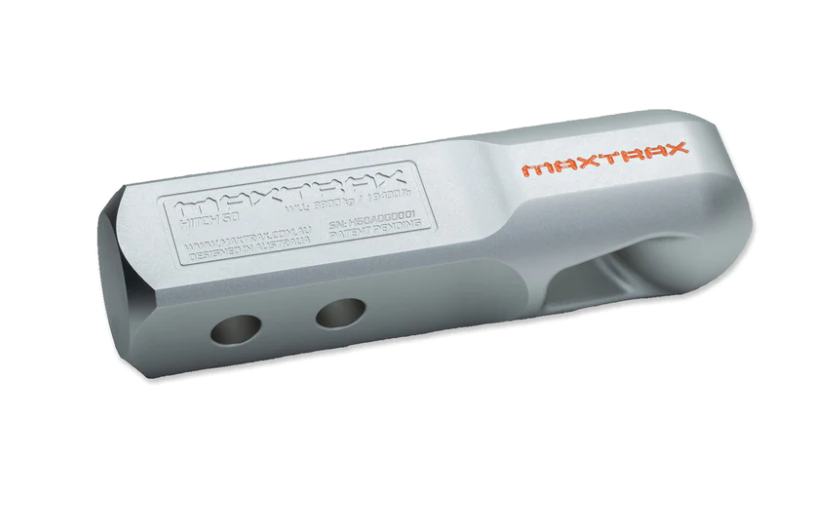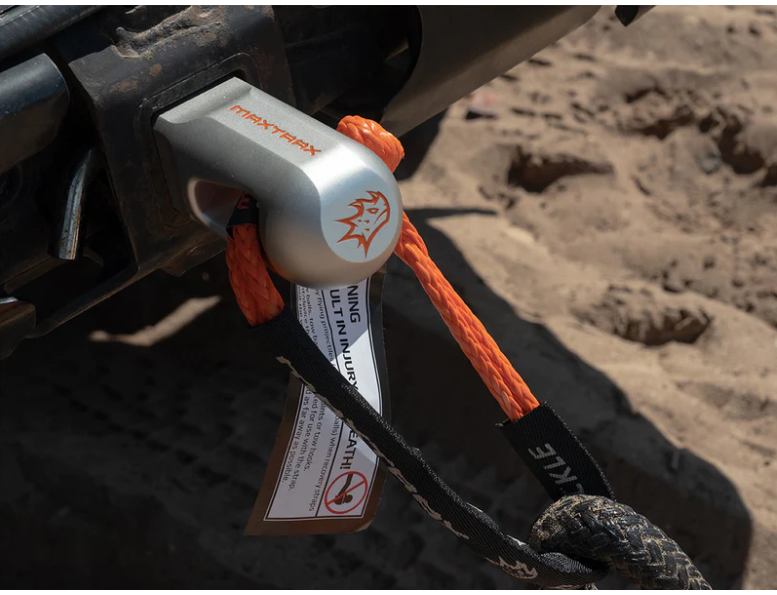Maxtrax
HITCH 50 RECOVERY HITCH - BY MAXTRAX SKU: MTXH50
HITCH 50 RECOVERY HITCH - BY MAXTRAX SKU: MTXH50
Couldn't load pickup availability

The MAXTRAX Hitch 50 is designed as a towbar mounted recovery point exclusively for use with soft shackles. As more travellers replace some of the hard shackles in their kit for soft ones, the MAXTRAX Hitch creates another safe opportunity for us to use them.
- Allows multidirectional pull in both vertical and horizontal axis
- Weight: 1.45 kg
- WLL: 8,800 kg
- Destructive Test Break Load: 44,000 kg / 97,003 lbs
- Crafted from CNC machined 6061 billet aluminium. It’s over-engineered with purpose, the idea being that it’s far safer to have the weakest point in the system as a synthetic part rather than a metal one.
- Towbar/Hitch Fitment: Fits standard 50mm / 2 inch tow hitch receivers
- Australian designed, engineered and tested.
Standard recovery hitches and other recovery points are generally designed for use with hard shackles. The issue here, is generally if a soft shackle is used with these, the corners at either side could significantly weaken the shackle.
By engineering a hitch to be used exclusively with soft shackles the team at MAXTRAX have made a hitch with an extremely large curve radius to ensure it doesn’t weaken the soft shackle it is paired with.
The all-new MAXTRAX Recovery System! After decades of 4x4ing in tough Aussie conditions and witnessing close calls with flying metal during recoveries, MAXTRAX knew there had to be a safer way.
If you travel often enough, chances are you’ll need more than recovery boards and the ability to air down for recovering your rig. The MAXTRAX Recovery System is the revolutionary range of modern 4×4 recovery gear that aids safer recoveries.
THE PHILOSOPHY OF THE MAXTRAX RECOVERY SYSTEM
The goal of the MAXTRAX Recovery System was to offer a safer, stronger and smarter do it all range of recovery gear.
Here's how they did it:
1. Reduction of metal in recovery components.
Steel shackles and other bulky gear becomes extremely dangerous at velocity if systems fail, so the majority of these have been replaced with high quality soft shackles.
2. Any metal components made with high safety factors.
The metal parts that remain in the system are over engineered and rated to ensure they are never the point of failure.
3. Build in a predictable point of failed if the system was overloaded.
By introducing the MAXTRAX Fuse Shackle, which is designed to be the controlled failure point if the system is overloaded.
Share




